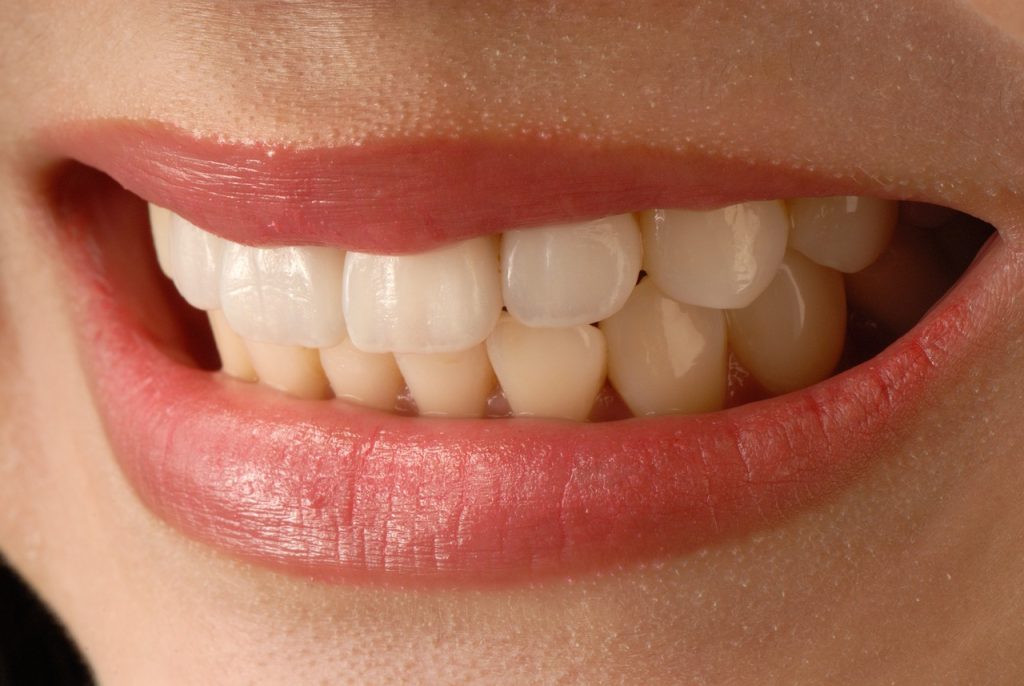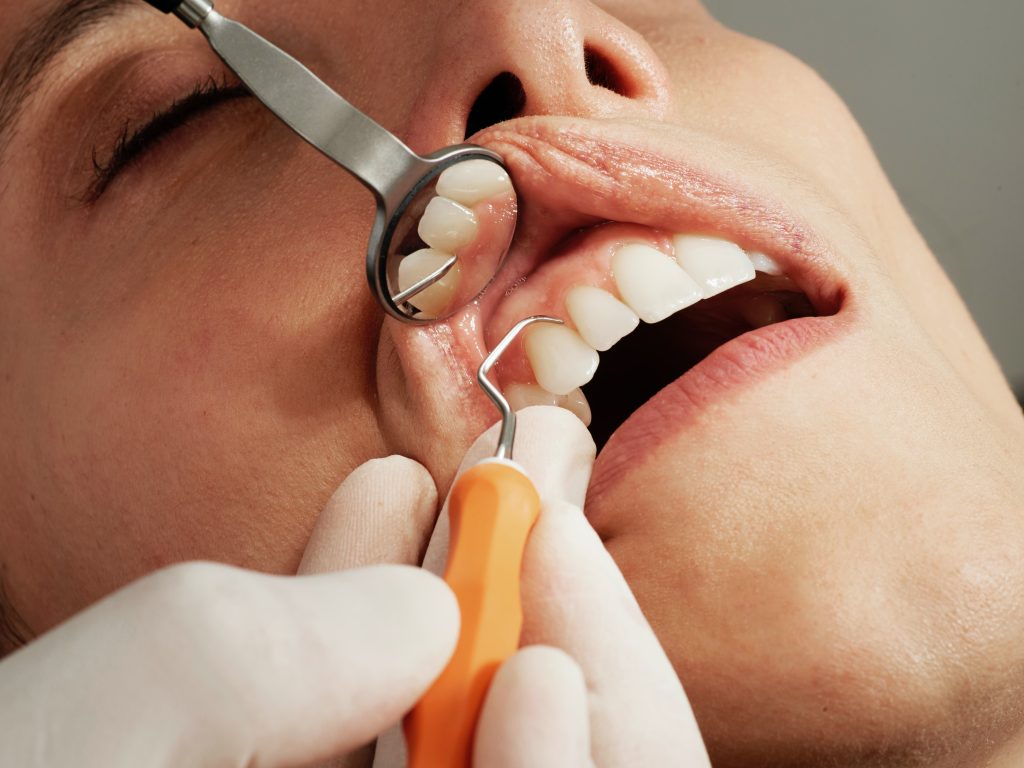
Show the clinics offering Dental veneers
Dental Veneers - What is a dental veneer?
Simply put, a dental veneer is a very thin permanent covering that is placed on the front surface of your own teeth. They are usually made of some kind of composite material (the white material that dentists use to fill teeth in) or different types of porcelain. They are glued (bonded) to the surface.They are usually applied only to the front teeth, which are visible when you smile.These thin covers will transform your smile and reveal those classic “movie star” teeth . In fact, veneer was first invented in Hollywood in the late 1920s. It is used on movie sets to give actors that perfect smile. The problem was that the glue used to attach the veneers to the actors’ teeth was not very good and fell off quickly.In the 1930s acrylic veneers became fashionable in the film industry. These were cemented to the teeth, but were intended only as temporary attachments. In the 1980s, it was discovered that hydrofluoric acid could be used to “etch” surfaces. This process allows the veneer to hold more permanently to the tooth surface.
 Since then, veneers have continued to evolve. This study focused on the material from which the veneer is made, the bonding material/substance, and how best to prepare the recipient tooth for the veneer. , it is generally accepted that they do not adhere to dentin (the underlying tooth enamel). So why veneers? First, many of us are not born with straight, white teeth. In addition, we often overwork our teeth. Smoking or drinking tea, coffee, red wine, cola, etc. can cause serious staining and discoloration on your teeth.In addition, using your teeth to open difficult objects such as bottles, cans, bags, etc. Some people This can damage the entire tooth or the enamel of the tooth, exacerbating the problem of crooked or misshapen teeth.
Since then, veneers have continued to evolve. This study focused on the material from which the veneer is made, the bonding material/substance, and how best to prepare the recipient tooth for the veneer. , it is generally accepted that they do not adhere to dentin (the underlying tooth enamel). So why veneers? First, many of us are not born with straight, white teeth. In addition, we often overwork our teeth. Smoking or drinking tea, coffee, red wine, cola, etc. can cause serious staining and discoloration on your teeth.In addition, using your teeth to open difficult objects such as bottles, cans, bags, etc. Some people This can damage the entire tooth or the enamel of the tooth, exacerbating the problem of crooked or misshapen teeth.
Most of the time, dental veneers are used for aesthetic reasons, not as an emergency treatment. It can be used to hide small chips, cracks, and stains that form on the surface of your teeth. Tooth veneers can also correct malformed teeth. It can make worn teeth slightly longer, fill gaps between teeth, or straighten crooked teeth. They can hide various flaws.
In some cases, veneers are all you need to straighten or restore teeth, or restore teeth to their natural color. However, if the purpose of the veneers is to improve tooth color (e.g. to lighten teeth), then a full set of veneers is required to ensure that all “visible” teeth look the same is. The minimum “full” set of veneers is 6 teeth above and below. Depending on how well your teeth are visible when you smile, this can increase to 8 or 10 teeth above and below.
Veneer Candidates - When are veneers used?
Most people qualify for dental veneers. They are especially useful for the following issues:
 Tooth discoloration: Teeth whitening is a simpler, cheaper and highly effective solution to tooth discoloration, but it is not always effective for more severely discolored teeth. Because the tooth veneer actually covers the teeth, stains and discoloration disappear.
Tooth discoloration: Teeth whitening is a simpler, cheaper and highly effective solution to tooth discoloration, but it is not always effective for more severely discolored teeth. Because the tooth veneer actually covers the teeth, stains and discoloration disappear.- Minor imperfections in teeth: Minor imperfections such as broken or slightly crooked or bad teeth may be fixed with tooth glue, but veneers give a more natural look.
- Multiple Tooth Problems: For those with multiple of the above problems, dental veneers offer a “one-stop” solution. Dental veneers require only a few visits to the dentist instead of paying for multiple visits to the dentist and multiple procedures that sometimes represent very painful or invasive treatments. We offer a limited invasive solution.
- Healthy Teeth and Gums and Good Oral Health: Veneers do not replace sick teeth and healthy gums. That is why it is important that restoration work on the tooth has already been carried out. Regular brushing and flossing will keep your natural teeth and veneers as long as possible.
- Adequate enamel: With certain types of veneers, a very small amount of enamel is removed from the tooth and the dental veneer is bonded to the remaining enamel. Therefore, it is important that there is sufficient enamel on the teeth. Otherwise, this bond may not bond properly to your tooth and may fall off.
- Fairly Straight Teeth: Veneers can correct small misalignments, but severe misalignments and malocclusions (malocclusion) can cause veneers to crack and decay very quickly. This is caused by extra pressure on the teeth and veneers.
- Habitually putting too much pressure on your teeth: Grinding or habitually clenching your teeth also puts extra pressure on your teeth and can ruin your veneers. or hardened teeth in general can significantly shorten the life of the veneer.
Step-by-step veneering process
If veneers are the answer to some of your dental problems, what exactly is the step-by-step veneering process? For porcelain veneers, the most common type of veneer, the entire process from start to finish requires up to three visits to the dentist. Some dentists, especially overseas dentists, may combine visits 1 and 2 for a total of only 2 visits.

First visit or consultation
At this stage, your dentist will assess the condition of your gums and teeth, as well as the overall health of your mouth, to determine if veneers are the right solution. We can also take impressions of your teeth to give you a visual representation of what your mouth will look like after treatment. This is a time to discuss any questions or concerns you may have with your dentist and make sure you are happy with the expected appearance of your new teeth! If not already agreed, during this visit Also discuss the cost of the work.
Second visit or preparation
Some dentists may combine this visit with the initial visit. During this visit, your dentist will remove a very thin layer of enamel (usually about 0.5mm) from your teeth. There are no nerves in the enamel, so there should be no pain. However, if necessary and depending on the amount of work, the dentist can administer a local anesthetic. This very small amount of enamel has to be scraped from the tooth so the thin veneer doesn’t add bulk in your mouth. It also means that veneers can bond more strongly to the “rough” surfaces of tooth enamel than to the smooth ones. Your dentist may also take additional impressions of your teeth.The shape of our teeth is individual and influenced by genetic factors such as gender and ethnicity. Temporary veneers may be installed at the end of this visit, but this is not always required.
Third visit or fitting
After the veneer is returned from the lab, it can be attached to the tooth. However, first, your dentist will check the fit to ensure that the alignment is correct and that the veneers do not interfere with your bite pattern.If necessary, your dentist can make minor changes to the veneers. Once you both decide the veneer is ‘perfect’, the fitting process can begin. First, thoroughly clean the tooth where the veneer is to be installed, making sure it is free of contamination that could affect the bonding process. An acidic gel is then applied to each affected tooth to microscopically roughen the enamel and provide a better surface for bonding. A special cement is then applied to the underside of each veneer and attached to the corresponding tooth. Finally, a hardening light is applied to harden the cement, creating a strong bond between the tooth surface and the veneer. Some people may feel some pain in their gums after the procedure, but it does not last long. Different veneers have slightly different processes.These differences are highlighted in the next section on different types of dental veneers.
How much does veneer cost?
The cost of veneers depends on three main factors:
- First, and perhaps most importantly, is the type of veneer you want
- the number of teeth you want veneered for.
- The amount of treatment that may or may not be needed is to ensure the teeth are in the best possible condition prior to the
 As a rule of thumb, in the UK, composite veneers cost between £200 and £500 per tooth and porcelain veneers between £400 and £1000. US costs start at $250 for composite veneers and $1000 for porcelain veneers. If you’re looking for straight, pearly white teeth, keep in mind that you’ll likely have at least 6 teeth above and below, possibly more, to treat. If more than one tooth is veneered, the price of one tooth will be reduced accordingly. As with all things in life, looking around is beneficial. Remember, however, that this is a medical procedure, so the experience and qualifications of the dentist are important. If possible, follow the recommendations of others who have undergone this procedure. The internet is full of stories about harrowing veneer experiences.Of course, this is only a small part of the procedure that is done each year, but it’s something to be aware of.
As a rule of thumb, in the UK, composite veneers cost between £200 and £500 per tooth and porcelain veneers between £400 and £1000. US costs start at $250 for composite veneers and $1000 for porcelain veneers. If you’re looking for straight, pearly white teeth, keep in mind that you’ll likely have at least 6 teeth above and below, possibly more, to treat. If more than one tooth is veneered, the price of one tooth will be reduced accordingly. As with all things in life, looking around is beneficial. Remember, however, that this is a medical procedure, so the experience and qualifications of the dentist are important. If possible, follow the recommendations of others who have undergone this procedure. The internet is full of stories about harrowing veneer experiences.Of course, this is only a small part of the procedure that is done each year, but it’s something to be aware of.
Overseas Veneers - Best Places to Get Veneers Overseas
Many countries can offer veneers of the same quality for less than in the UK. Savings of 50% or more are not unrealistic. However, as with any treatment in the UK, it is worth checking the qualifications and experience of the dentist/clinic and taking into account recommendations from others. His three most popular countries for dental veneers abroad are Turkey, Hungary and Poland. Overseas veneer prices are affected in much the same way as UK prices, depending on the type of veneer required and the number of teeth the veneer is required for. Also, it depends on the dentist.
Visiting a dentist abroad for a veneering procedure requires a stay of 5 days due to short waiting times for veneers to be made in the lab. From Monday to Friday he may be able to make two visits a day instead of five days abroad. For a complete set of veneers, some dentists will cover some or all of your accommodation and airfare.
Veneers in Poland – How much does veneer cost in Poland?
 Poland is second only to Hungary in terms of popularity of dental clinics in Europe. Polish veneers start at around £200 per tooth. The clinic is equipped with the latest X-ray equipment and has its own laboratory for rapid preparation of veneers. To the surprise of many, most dental clinics in Poland are better equipped and equipped than those in Western Europe. Dental clinics can be found in many Polish cities, but if you want to combine treatment with a vacation, consider Krakow being voted his best city break destination for the third year in a row. (Budapest also scored high at 6th place). In addition, low cost airlines offer a wide range of flights at very competitive prices from many regional airports in the UK and many others in Europe. The actual cost to pay varies greatly depending on the initial condition of the teeth and gums. We always recommend sending radiation to a dentist abroad so they can provide a more accurate estimate based on your personal situation.
Poland is second only to Hungary in terms of popularity of dental clinics in Europe. Polish veneers start at around £200 per tooth. The clinic is equipped with the latest X-ray equipment and has its own laboratory for rapid preparation of veneers. To the surprise of many, most dental clinics in Poland are better equipped and equipped than those in Western Europe. Dental clinics can be found in many Polish cities, but if you want to combine treatment with a vacation, consider Krakow being voted his best city break destination for the third year in a row. (Budapest also scored high at 6th place). In addition, low cost airlines offer a wide range of flights at very competitive prices from many regional airports in the UK and many others in Europe. The actual cost to pay varies greatly depending on the initial condition of the teeth and gums. We always recommend sending radiation to a dentist abroad so they can provide a more accurate estimate based on your personal situation.

 Tooth discoloration: Teeth whitening is a simpler, cheaper and highly effective solution to tooth discoloration, but it is not always effective for more severely discolored teeth. Because the tooth veneer actually covers the teeth, stains and discoloration disappear.
Tooth discoloration: Teeth whitening is a simpler, cheaper and highly effective solution to tooth discoloration, but it is not always effective for more severely discolored teeth. Because the tooth veneer actually covers the teeth, stains and discoloration disappear.